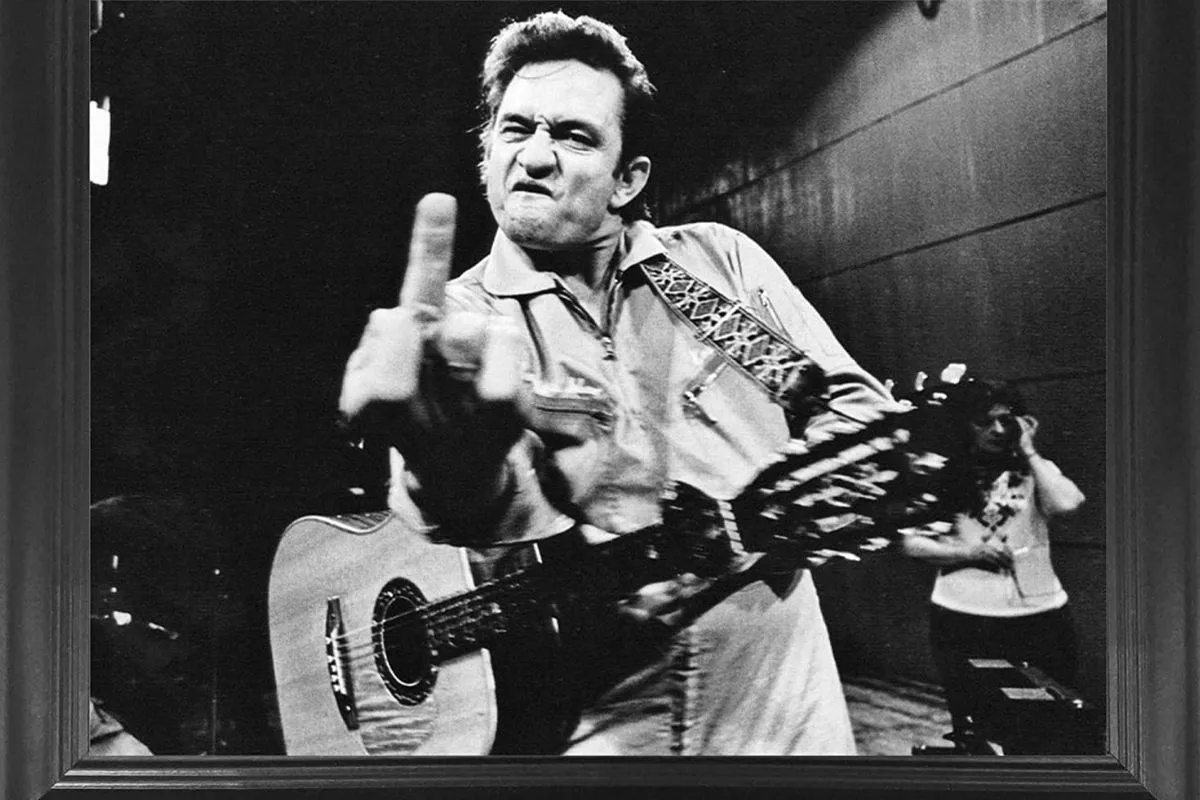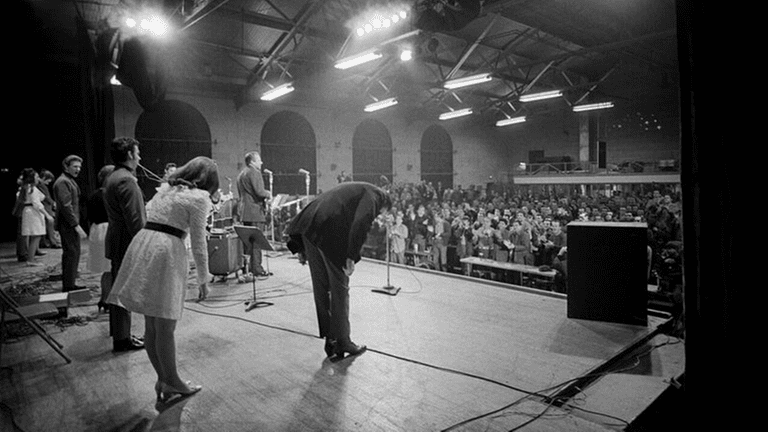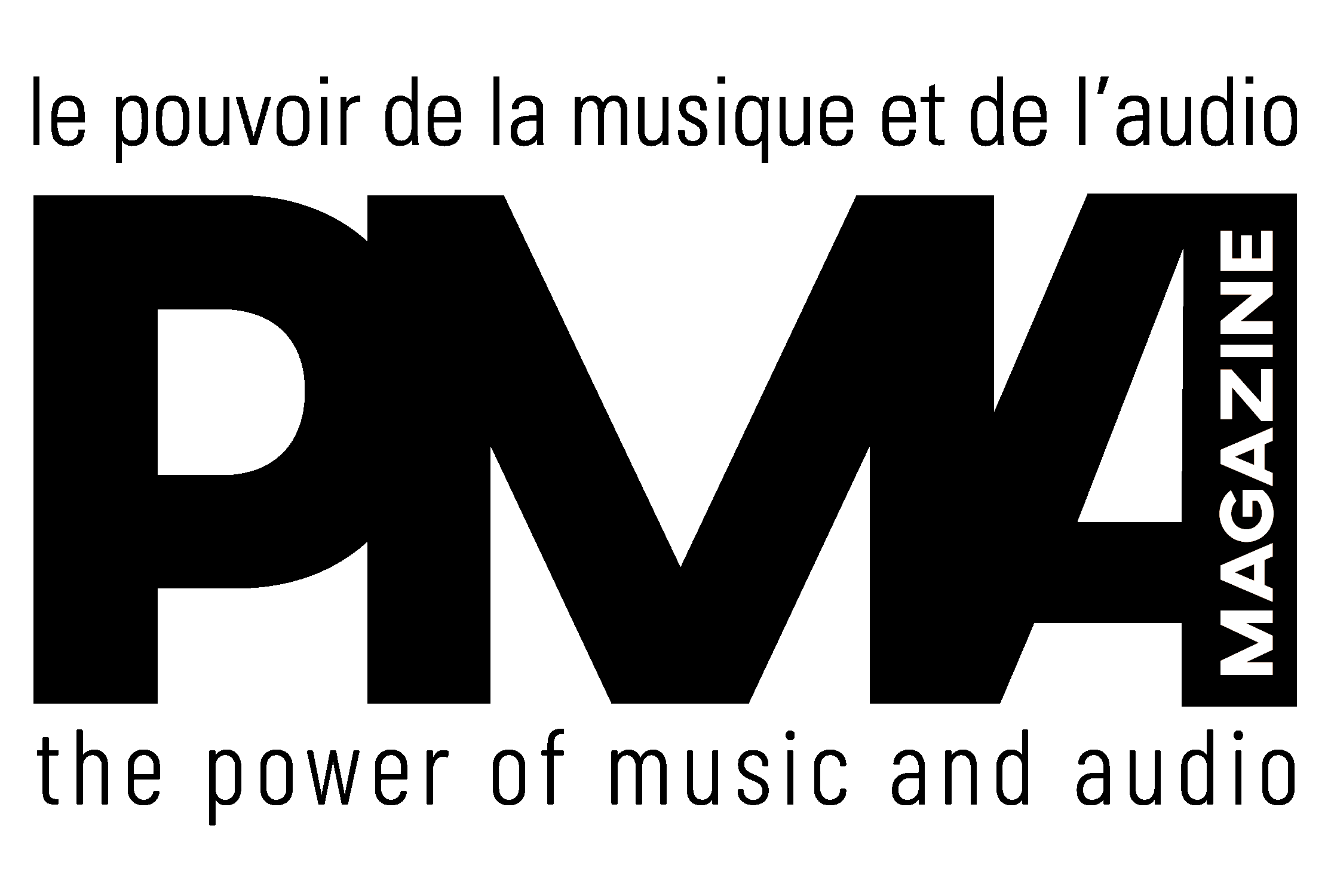
In 1969, in the concrete bowels of San Quentin State Prison, Johnny Cash raised his middle finger to the lens of photographer Jim Marshall. The image is rebellious, iconic, and transcendent, much like the Man in Black himself. But it’s not just a picture; it’s a complex narrative of America, of its music, its social struggles, and of Cash, an artist who defied easy categorization.
Jim Marshall, who had extensively worked with Cash, suggested a provocative idea: “John, let’s do a shot for the warden!” What followed was an immediate and instinctive gesture from Cash—a raised middle finger aimed not just at a lens, but at an entire social system. This was not just any venue; it was San Quentin, one of the most notorious prisons in America. Cash had performed at prisons at least 30 times by this point. Despite never having served more than a night in jail, he had an innate ability to empathize with the incarcerated.
It would be a misunderstanding to categorize Cash as merely a musician who wanted to play his songs without making waves. He was deeply political without being partisan. He was an advocate for the marginalized, the downtrodden, the outcasts whom mainstream society preferred to overlook. He sang about Native American rights, he stood against gun violence, and his lyrics often evoked a world of struggle, whether it was the weariness of war or the plight of the prisoner. This activism was never an appendage to his art; it was inseparable from it.
Cash was not merely rebelling against the prison system or the injustices he saw. His defiance ran deeper, symbolized even by his all-black attire. To him, the color was a “symbol of rebellion—against a stagnant status quo, against our hypocritical houses of God, against people whose minds are closed to others’ ideas.” Cash didn’t just sing these themes; he lived them. His song “Man in Black” articulates why he donned the color—to represent those who are suffering or left behind.
Even after his major achievements in the music world, Cash found himself snubbed by the Nashville establishment. When he won the Grammy for Best Country Album for “Unchained,” he took out a full-page ad in Billboard featuring the iconic image. It was as if the picture communicated what words could not—that Johnny Cash didn’t need the approval of an industry that had so often failed to understand him.
The photograph is also a testament to how Cash could reshape songs and ideas into something uniquely his. Consider his cover of “Hurt” by Nine Inch Nails. Trent Reznor, the song’s original artist, once said that Cash’s version felt like “someone kissing your girlfriend.” It was so transformative that Reznor felt the song was no longer his but belonged to Cash. This ability to touch something and give it a new essence was a hallmark of Cash’s artistic career, be it with covers or even traditional songs from the Great American Songbook.
So, when you look at that infamous image of Cash flipping the bird, know that it’s not just a photograph—it’s a narrative, a stance, a history, and a philosophy, all wrapped into one frame. Like the man himself, it is multi-layered, teeming with context, and utterly unforgettable. It’s Johnny Cash in a single, unfiltered moment, yet it’s also a complex tableau of American life at a turning point in history. It remains not merely a relic of the past, but a touchstone that continues to resonate, challenge, and inspire.










Leave a Reply